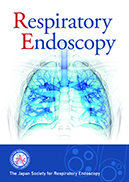Volume 2, Issue 3
Displaying 1-13 of 13 articles from this issue
- |<
- <
- 1
- >
- >|
Review Article
-
2024 Volume 2 Issue 3 Pages 106-114
Published: November 28, 2024
Released on J-STAGE: November 28, 2024
Download PDF (352K) -
2024 Volume 2 Issue 3 Pages 115-121
Published: November 28, 2024
Released on J-STAGE: November 28, 2024
Download PDF (520K) -
2024 Volume 2 Issue 3 Pages 122-127
Published: November 28, 2024
Released on J-STAGE: November 28, 2024
Download PDF (151K) -
2024 Volume 2 Issue 3 Pages 128-132
Published: November 28, 2024
Released on J-STAGE: November 28, 2024
Download PDF (398K)
Original Article
-
2024 Volume 2 Issue 3 Pages 133-140
Published: November 28, 2024
Released on J-STAGE: November 28, 2024
Download PDF (1068K) -
2024 Volume 2 Issue 3 Pages 141-147
Published: November 28, 2024
Released on J-STAGE: November 28, 2024
Download PDF (288K)
Case Report
-
2024 Volume 2 Issue 3 Pages 148-153
Published: November 28, 2024
Released on J-STAGE: November 28, 2024
Download PDF (1315K) -
2024 Volume 2 Issue 3 Pages 154-157
Published: November 28, 2024
Released on J-STAGE: November 28, 2024
Download PDF (430K) -
2024 Volume 2 Issue 3 Pages 158-162
Published: November 28, 2024
Released on J-STAGE: November 28, 2024
Download PDF (764K) -
2024 Volume 2 Issue 3 Pages 163-166
Published: November 28, 2024
Released on J-STAGE: November 28, 2024
Download PDF (439K) -
2024 Volume 2 Issue 3 Pages 167-172
Published: November 28, 2024
Released on J-STAGE: November 28, 2024
Download PDF (1033K)
Image
-
2024 Volume 2 Issue 3 Pages 173-174
Published: November 28, 2024
Released on J-STAGE: November 28, 2024
Download PDF (511K) -
2024 Volume 2 Issue 3 Pages 175-177
Published: November 28, 2024
Released on J-STAGE: November 28, 2024
Download PDF (1392K)
- |<
- <
- 1
- >
- >|
